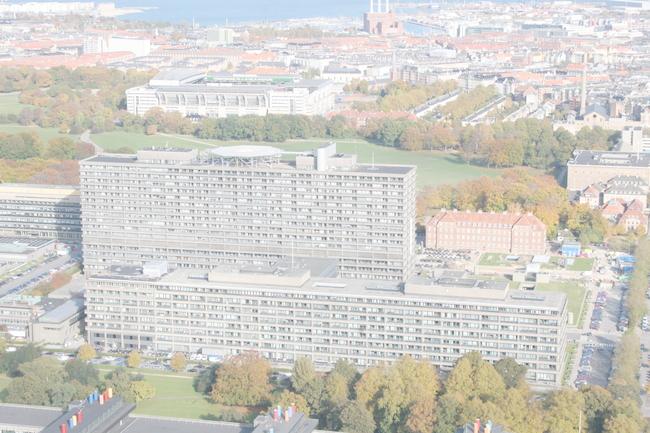Den komplekse medicinske patient med fokus på forebyggelse og behandling af tromboemboliske sygdomme








Tromboseprofylakse ved artroskopisk kirurgi
Jørn Dalsgaard Nielsen
Enhed for Trombose & Hæmostase, Rigshospitalet
Hvorfor tromboseprofylakse?
For 30 år siden var kirurgi den hyppigste årsag til
venetrombose og lungeemboli under indlæggelse
Enhed for Trombose & Hæmostase, Rigshospitalet
Årsager til venøs tromboembolisk sygdom (VTE)
Blandt faktorer, som
disponerer til VTE, er
kirurgi stadig den
vigtigste enkeltfaktor.
Provokeret af
Spontane
Nordström M et al. J Intern Med 1992;232:155. Heit JA et al. Arch Intern Med. 2002;162:1245–8.
Enhed for Trombose & Hæmostase, Rigshospitalet
VTE: >50 risk factors
Surgery. Trauma. High age. Partus and puerperium. Perivenous inflammation. Radioisotope exposure. Intravenous catheters. Chemotherapy. Malignant diseases. Antitrombin deficiency. Protein C deficiency. Protein S deficiency. Faktor V Leiden mutation. Prothrombin mutation. Heparin cofactor II deficiency. Lupus inhibitor. Cardiolipin antibody. Beta-2-glycoprotein-1-antibody. Severe factor XII deficiency. High factor VIII. High factor VII. Hypofibrinolysis. Homocysteinemi. Nephrotic syndrome. Inflammatory intestinal disease. Oral contraception and estrogen. Venous obstruction. Insufficient (use of) vein pump. High blod/plasma viscocity. Previous VTE. Other venous obstruction. Venous malformations. e.g. vena cava atresia. Paralysed limbs. Plaster casts. Immobilisation e.g. bed rest. Long journeys. Venous insufficiency. Varicous veins. Obesity. Pregnancy. Heart failure. Respiratory failure. Assisted ventilation. Dehydration. Myeloproliferative disease.
Enhed for Trombose & Hæmostase, Rigshospitalet
VTE-risiko ved kirurgi
Elektiv hofte- og knæalloplastik
Ikke-malign abdominalkirurgi
Enhed for Trombose & Hæmostase, Rigshospitalet
Profylaksemetoder
profylakse
Elektiv hofte- og knæalloplastik
Høj LMH-dosis:
Mekaniske
4-5.000 IE dgl.
metoder:
Ikke-malign abdominalkirurgi
Lav LMH-dosis:
2-3.500 IE dgl.
Hurtig
mobilisering
Enhed for Trombose & Hæmostase, Rigshospitalet
Extended-Duration Thromboprophylaxis With Enoxaparin After Arthroscopic Surgery of
the Anterior Cruciate Ligament: A Prospective, Randomized, Placebo-Controlled Study
Marlovits et al. Arthroscopy 2007;23:696-702
Enhed for Trombose & Hæmostase, Rigshospitalet
Extended-Duration Thromboprophylaxis With Enoxaparin After Arthroscopic Surgery of
the Anterior Cruciate Ligament: A Prospective, Randomized, Placebo-Controlled Study
Marlovits et al. Arthroscopy 2007;23:696-702
Enhed for Trombose & Hæmostase, Rigshospitalet
Falck-Ytter et al. Chest 2012; 141(2)(Suppl):e278S–e325S
Enhed for Trombose & Hæmostase, Rigshospitalet
April 2008 - Update: discussions between NICE and the British Orthopaedic Association Discussions have taken place between the National Institute for Health and Clinical Excellence (NICE) and the British Orthopaedic Association (BOA) on the issues generated by the NICE guideline on the prevention of venous thrombo-embolism (VTE). It was concluded that as the guidance was generic, further information should be made available to allow orthopaedic surgeons to understand the relevance of the guidelines to their practice.
This page was last updated: 30 March 2010
Enhed for Trombose & Hæmostase, Rigshospitalet
This is a reprint of a Cochrane review, prepared and maintained by The Cochrane Collaboration and published in The Cochrane Library 2011, Issue 3
Enhed for Trombose & Hæmostase, Rigshospitalet
Ramos J et al. Cochrane Database Syst Rev 2008;(4):CD005259
Enhed for Trombose & Hæmostase, Rigshospitalet
Ramos J et al. Cochrane Database Syst Rev 2008;(4):CD005259
Enhed for Trombose & Hæmostase, Rigshospitalet
Ramos J et al. Cochrane Database Syst Rev 2008;(4):CD005259
Enhed for Trombose & Hæmostase, Rigshospitalet
Cochrane-analysens konklusioner
The incidence of DVT during arthroscopy varies from 3.1% to 17.9% in a meta-analysis by Ilahi et al. However, the question we are looking for an answer to is: what is the clinical relevance of distal thrombosis diagnosed through sonogram? The literature is not conclusive in this area.
The number needed to treat to benefit (NNTB) (17) relates to asymptomatic DVT, and the number needed to harm (NNTH) (20) is about a clinical event. Assuming a ratio of asymptomatic distal DVT to clinically apparent DVT of 1:10 to 1:20, the NNTB to prevent a clinical event would range from 170 to 340.
We conclude that the physician needs to discuss these benefits and possible complications with the patient until new studies are performed. It is essential that future studies stratify patients according to their risk factors, and also stratify arthroscopic procedures.
Ramos J et al. Cochrane Database Syst Rev 2008;(4):CD005259
Enhed for Trombose & Hæmostase, Rigshospitalet
Low-Molecular-Weight Heparin versus Compression Stockings for
Thromboprophylaxis after Knee Arthroscopy (KANT Study)
• Patients
– 1761 consecutive patients undergoing knee arthroscopy
• Design
– Open, randomized study
• Intervention
– Patients were randomly assigned to wear full-length graduated
compression stocking for 7 days (660 patients) or
– to receive a once-daily subcutaneous injection of LMWH
nadroparin, 3800 anti-Xa IU for 7 days (657 patients) or
– nadroparin, 3800 anti-Xa IU for 14 days (444 patients).
• The data and safety monitoring board prematurely stopped the 14-
day heparin group after the second interim analysis.
Camporese et al. Ann Intern Med. 2008;149:73-82.
Enhed for Trombose & Hæmostase, Rigshospitalet
Low-Molecular-Weight Heparin versus Compression Stockings for Thromboprophylaxis after Knee Arthroscopy (KANT Study)
Camporese et al. Ann Intern Med. 2008;149:73-82.
Enhed for Trombose & Hæmostase, Rigshospitalet
Incidence of symptomatic VTE
after elective knee arthroscopy
• A retrospective cohort study of elective arthroscopic knee
procedures during a twenty-seven-month period (January 1,
2006, through March 31, 2008)
• Use of the administrative database identified 21,794
arthroscopic knee procedures.
• The occurrence of a symptomatic DVT or PE within ninety
days after surgery was identified.
• Mortality and the cause of death were captured with use of
electronic medical records.
• Patient charts were reviewed for confirmation of DVT, PE, or
• Patients who had a history of a venous thromboembolism or
who had received anticoagulation therapy within fourteen
days prior to the index surgery were excluded.
Maletis et al. J Bone Joint Surg Am. 2012;94:714-20
Enhed for Trombose & Hæmostase, Rigshospitalet
Incidence of symptomatic VTE
after elective knee arthroscopy
Results
• The study cohort comprised 20,770 patients who met the
inclusion criteria.
• 51 patients developed a DVT
– (0.25%; 95% confidence interval, 0.18% to 0.31%)
• 35 patients developed a pulmonary embolism
– (0.17%; 95% confidence interval, 0.11% to 0.22%)
• 9 patients (0.04%) died within ninety days of surgery
– Only 1 death was confirmed to have resulted from a PE
Maletis et al. J Bone Joint Surg Am. 2012;94:714-20
Enhed for Trombose & Hæmostase, Rigshospitalet
• Prospectively collected admissions data, routinely collected
on every English NHS patient, were analysed to determine the rates of complications within 30 days (including reoperation and re-admission), 90-day symptomatic venous thromboembolism and all-cause mortality.
• There were 301,701 operations performed between 2005 and
2010 – an annual incidence of 9.9 per 10,000 English population.
• Of these, 16,552 (6%) underwent ligament reconstruction and
106,793 (35%) underwent meniscal surgery.
Jameson et al. J Bone Joint Surg Br 2011;93-B:1327–33.
Enhed for Trombose & Hæmostase, Rigshospitalet
Jameson et al. J Bone Joint Surg Br 2011;93-B:1327–33.
Enhed for Trombose & Hæmostase, Rigshospitalet
Risk factors of DVT in elective knee arthroscopy
DVT = 0.0059 + 0.0407 (tourniquet time[>30 min]) + 0.0968 (obesity [BMI>30]) + 0.125 (age[>65 years]) - 0.0381 (CEAP2-4) + 0.439 (past DVT) + 0.0996 (hormonal replacement therapy/oral contraception)
Delis et al. Thromb Haemost 2001; 86: 817–21
Enhed for Trombose & Hæmostase, Rigshospitalet
Risk factors of DVT in elective knee arthroscopy
Delis et al. Thromb Haemost 2001; 86: 817–21
Enhed for Trombose & Hæmostase, Rigshospitalet
Risk factors of DVT in electiv
or få knee arthroscopy
som basis for en
algoritme
Delis et al. Thromb Haemost 2001; 86: 817–21
Enhed for Trombose & Hæmostase, Rigshospitalet
Fremtiden………….?
Enhed for Trombose & Hæmostase, Rigshospitalet
Falck-Ytter et al. Chest 2012; 141(2)(Suppl):e278S–e325S
Enhed for Trombose & Hæmostase, Rigshospitalet
Tromboseprofylakse med
rivaroxaban ved knæartroskopi
• 467 patienter, som fik foretaget knæartroskopi, fik
tromboseprofylakse med
– Bemiparin i 3 uger eller – Rivaroxaban 10 mg i 3 uger
• Endepunkt: Symptomatisk, objektivt verificeret DVT
– Ingen patienter fik DVT
• Rivaroxaban blev seponeret hos 1 patient pga
Muñoa et al. Musculoskelet Surg 2013, Jul 14. Epub ahead of print
Enhed for Trombose & Hæmostase, Rigshospitalet
Regulering af
Behandling
Enhed for Trombose & Hæmostase, Rigshospitalet
Blødningsrisiko ved indgreb under
vedligeholdt VKA-behandling
INR i terapeutisk niveau INR gerne <2,0 (max 2,5) INR <1,5
Enhed for Trombose & Hæmostase, Rigshospitalet
2010 Feb;33(2):82-6. doi: 10.3928/01477447-20100104-08.
Arthroscopy on anticoagulated patients: a retrospective evaluation of
postoperative complications.
, .
Enhed for Trombose & Hæmostase, Rigshospitalet
Changes in INR after discontinuation of warfarin
INR after discontinuation of warfarin
Enhed for Trombose & Hæmostase, Rigshospitalet
Revertering af VKA-behandling
Tid til fuld
VKA har lang halveringstid
Langsom syntese af koag.faktorer
Optøning, infusion af stort volumen
Alle manglende faktorer til stede
partiel effekt Stadig mangel på FII, FIX og FX
Enhed for Trombose & Hæmostase, Rigshospitalet
Patienters tromboserisiko ved de tre
almindeligste indikationer for VKA-behandling
Indikation for VKA-behandling
Nylig (<3 mdr.) VTE.
Nylig (<6 mdr.) apopleksi eller TCI
Trombofili - højrisikofaktorer, fx
Nylig (<3 mdr.) apopleksi eller TCI.
Alle mitralklapproteser
mangel på antitrombin, protein C
CHADS2-score på 5-6.
Ældre (kugleventil eller enkelt
eller protein S, homozygot faktor V
Leiden, lupusantikoagulans eller
multiple risikofaktorer.
VTE for 3-12 mdr siden.
Dobbelt vippeskive aortaklap + >=1
af følgende risikofaktorer:
Moderat atrieflimren, tidligere apopleksi eller CHADS2-score på 3-4.
Trombofili - lavrisikofaktorer, fx
TCI, hypertension, diabetes,
heterozygoti for faktor V Leiden eller
hjerteinsufficiens, alder >75 år
Dobbelt vippeskive aortaklap uden
1 tilfælde af VTE for >12 mdr. siden
CHADS2-score på 0-2.
og ingen supplerende risikofaktorer
Enhed for Trombose & Hæmostase, Rigshospitalet
Principles of heparin bridging of VKA
Discontinuation of VKA
Resumption of VKA in preop.
dose on the day of surgery
effect and risk of
Effect of vitamin K antagonist
Effect of LMW heparin
Enhed for Trombose & Hæmostase, Rigshospitalet
Principles of heparin bridging of VKA
Discontinuation of VKA
Resumption of VKA in preop.
dose on the day of surgery
effect and risk of
Effect of vitamin K antagonist
6-12 h postop: LMWH in
starting the day
prophylactic dose ≥2 d
Effect of LMW heparin
after stop of VKA
before any increase
Period with high risk of postoperative bleeding
Enhed for Trombose & Hæmostase, Rigshospitalet
Principles of heparin bridging of VKA
Discontinuation of VKA
Resumption of VKA in preop.
dose on the day of surgery
effect and risk of
Effect of vitamin K antagonist
6-12 h postop: LMWH in
starting the day
prophylactic dose ≥2 d
Effect of LMW heparin
after stop of VKA
before any increase
Period with high risk of postoperative bleeding
Therapeutic dose of
Therapeutic dose of LMWH
Patients with high TE risk*
Prophylactic dose of LMWH
Low - intermediate TE risk
* Mainly patients with mechanical heart
Low dose of LMWH: 4.000-5.000 IU once daily (depending on brand)
valves or recent TE
Therapeutic dose of LMWH: 100 IU/kg b.i.d.
Enhed for Trombose & Hæmostase, Rigshospitalet
Postoperativ genoptagelse af behandling
med vitamin K-antagonist (VKA)
• VKA genoptages, så snart pt. kan indtage tabletter,
gerne allerede på operationsdagen
• VKA-behandlingen genoptages med samme dosis,
som patienten fik inden indlæggelsen
• Alle VKA-patienter skal have LMWH postoperativt:
– Lavrisikopatienter: profylaksedosis af LMWH startende 6-
12 timer postoperativt, gives indtil INR >2,0
– Højrisikopatienter: profylaksedosis af LHWM startende 6-
12 timer postoperativt med stigning til terapeutisk dosis efter 1-3 døgn, afhængig af blødning, gives indtil INR er i terapeutisk niveau
Enhed for Trombose & Hæmostase, Rigshospitalet
Perioperative regulation of dabigatran
Interventional bleeding risk
Dabigatran
150 mg b.i.d.*
Creatinine clearance
Stop 1½ day preop.
Stop 3 days preop.
Stop 2 days preop.
Stop 4 days preop.
1-4 h. postop.: 110 mg
6-12 h. postop.: 75 mg
followed by 110 mg b.i.d.
followed by 75 mg b.i.d.
Dose may be increased
Dose may be increased
after 2-3 days§
after 4-5 days§
1-4 h. postop.: 75 mg
6-12 h. postop.: 75 mg
followed by 110 mg o.d.
followed by 75 mg o.d.
Dose may be increased
Dose may be increased
after 2-3 days§
after 4-5 days§
*Reduce preoperative interval with 1/3 if the patient preoperatively had prophylactic dose of dabigatran. ** This also applies to patients over 75 years with normal renal function. § Increase of dose relates to patients who received preoperative therapeutic dose.
Enhed for Trombose & Hæmostase, Rigshospitalet
Perioperative regulation of rivaroxaban
Interventional bleeding risk
Rivaroxaban
20 mg once daily*
Creatinine clearance
Stop 1 day preop.
Stop 2 days preop.
Stop 1½ day preop.
Stop 3 days preop.
6-10 h. postop.: 10 mg
8-12 h. postop.: 10 mg
followed by 10 mg o.d.
followed by 10 mg o.d.
Dose may be increased
Dose may be increased
after 2-3 days§
after 4-5 days§
*Reduce preoperative interval with 1/3 if the patient preoperatively had prophylactic dose of rivaroxaban. § Increase of dose relates to patients who received preoperative therapeutic dose.
Enhed for Trombose & Hæmostase, Rigshospitalet
Perioperative regulation of apixaban
Interventional bleeding risk
Apixaban
5 mg b.i.d.*
Creatinine clearance
Stop 1½ day preop.
Stop 3 days preop.
12-24 h. postop.: 2.5 mg
12-24 h. postop.: 2.5 mg
followed by 2.5 mg b.i.d.
followed by 2.5 mg b.i.d.
Dose may be increased
Dose may be increased
after 2-3 days§
after 4-5 days§
*Reduce preoperative interval with 1/3 if the patient preoperatively had prophylactic dose of rivaroxaban. § Increase of dose relates to patients who received preoperative therapeutic dose.
Enhed for Trombose & Hæmostase, Rigshospitalet
Jørn Dalsgaard Nielsen
Enhed for Trombose & Hæmostase
Hæmatologisk Klinik
Email: [email protected]
Source: http://www.saks.nu/media/24896/tromboseprofylakse_jorn_dalsgaard_nielse.pdf
18 al 20 de febrero de 2009 3er Foro Latinoamericano sobre Higiene íntima Femenina Actualización en patología vulvar y tracto urinario Del 18 al 20 de febrero de 2009 se realizó en la Ciudad de Varadero, Cuba, el 3er Foro Latinoamericano sobre Higiene Íntima Femenina. En esta ocasión, el evento estuvo dirigido a la actualización en patología vulvar y tracto urinario. Diversos especialistas de países latinoamericanos comentaron sus experiencias con el objetivo de actualizar al médico ginecólogo en la etiología, el diagnóstico y el tratamiento de las distintas afecciones vulvares y vaginales. Se contó con la presencia del Dr. Jaime Piquero Casals (Venezuela), quien habló sobre los aspectos clínicos de las vulvitis frecuentes y de la problemática de la infección vulvar por HPV. Las distrofias vulvares, especialmente el liquen escleroso y el liquen simple crónico, fueron comentadas por la Dra. Lina María Figueira (Venezuela). El Dr. Wel ington Aguirre (Ecuador) se refirió a los trastornos genitourinarios en la menopausia y su abordaje farmacológico. El Dr. Alejandro Paradas (República Dominicana) disertó acerca de la protección y la prevención de las infecciones vaginales. Finalmente, el Dr. Santiago Herrán (Colombia) expuso los resultados del primer estudio epidemiológico latinoamericano sobre hábitos de higiene íntima femenina y su relación con la vaginosis bacteriana en mujeres latinoamericanas, inquietud que tuvo su origen en el foro predecesor realizado en 2008 en Panamá.Surge como principal conclusión de este encuentro que la adopción de hábitos de higiene íntima femenina adecuados es una medida esencial en la prevención de afecciones genitourinarias tanto de origen infeccioso como no infeccioso.
Plastic . Reconstructive . Aesthetic Suite 304, Level 3. 135 Macquarie Street. T 02 9252 8200 F 02 9251 0300 Management of ageing skin Advice for patients regarding home skin care and cosmeceuticals Patients, friends and family are constantly asking me what products to use on their skin. Essentially they all want to know the same thing – how to reverse (or at least minimise) the effects of ageing. They are understandably confused by the huge number of ‘cosmeceutical' products on the market and easily misguided by flashy advertising campaigns and pushy sales reps. Often they end up spending large sums of money on a variety of products and treatments only to be disappointed by poor results.








